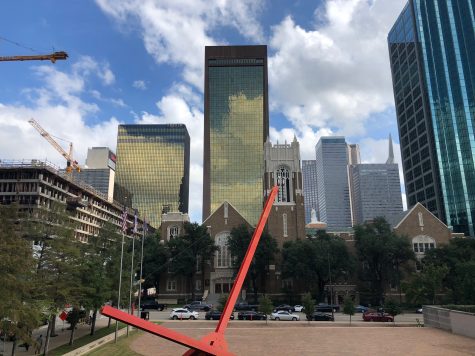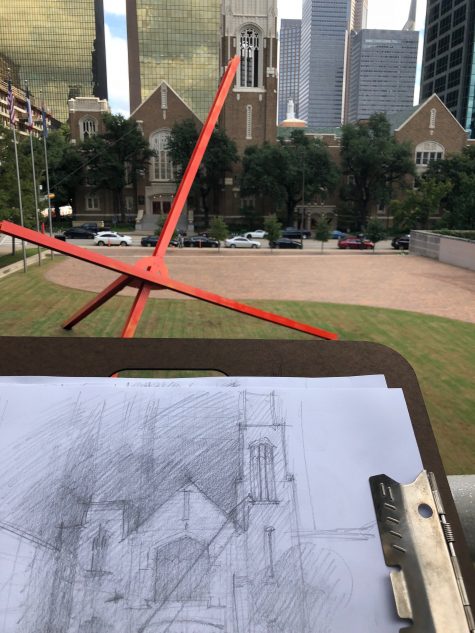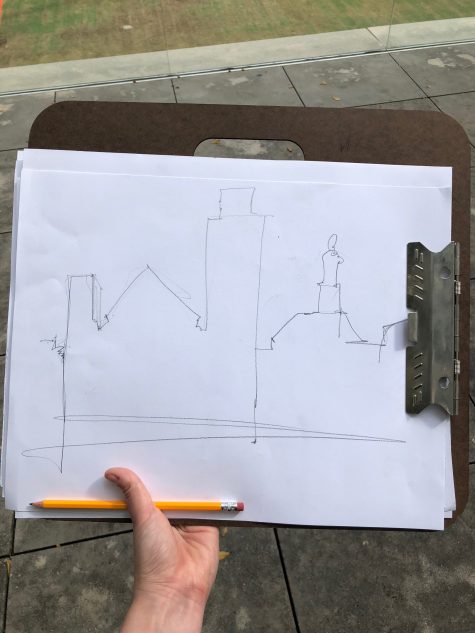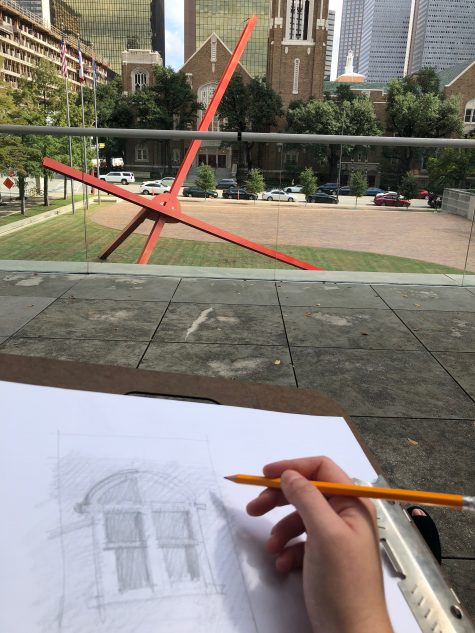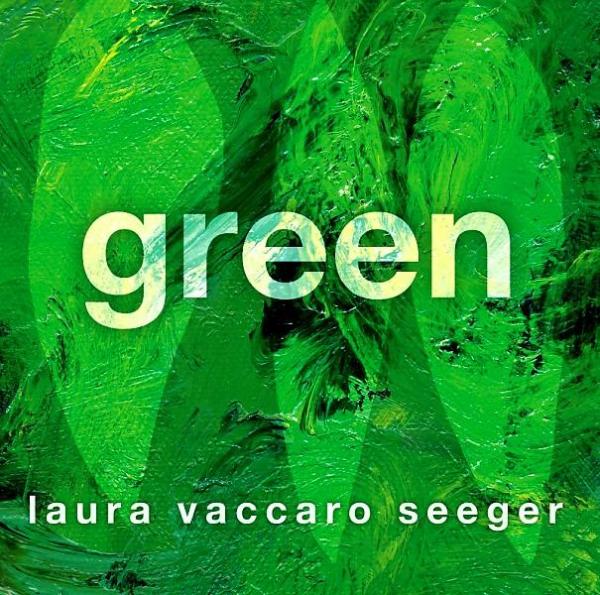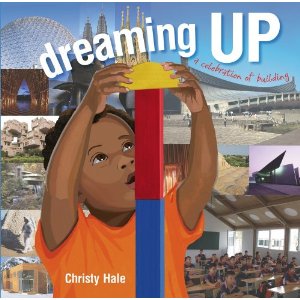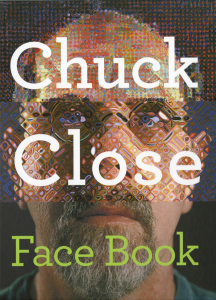“Success in your career begins in an ordinary classroom, in an ordinary chair.”
— Diana Maldonado, grade 11, Skyline High School (DISD)
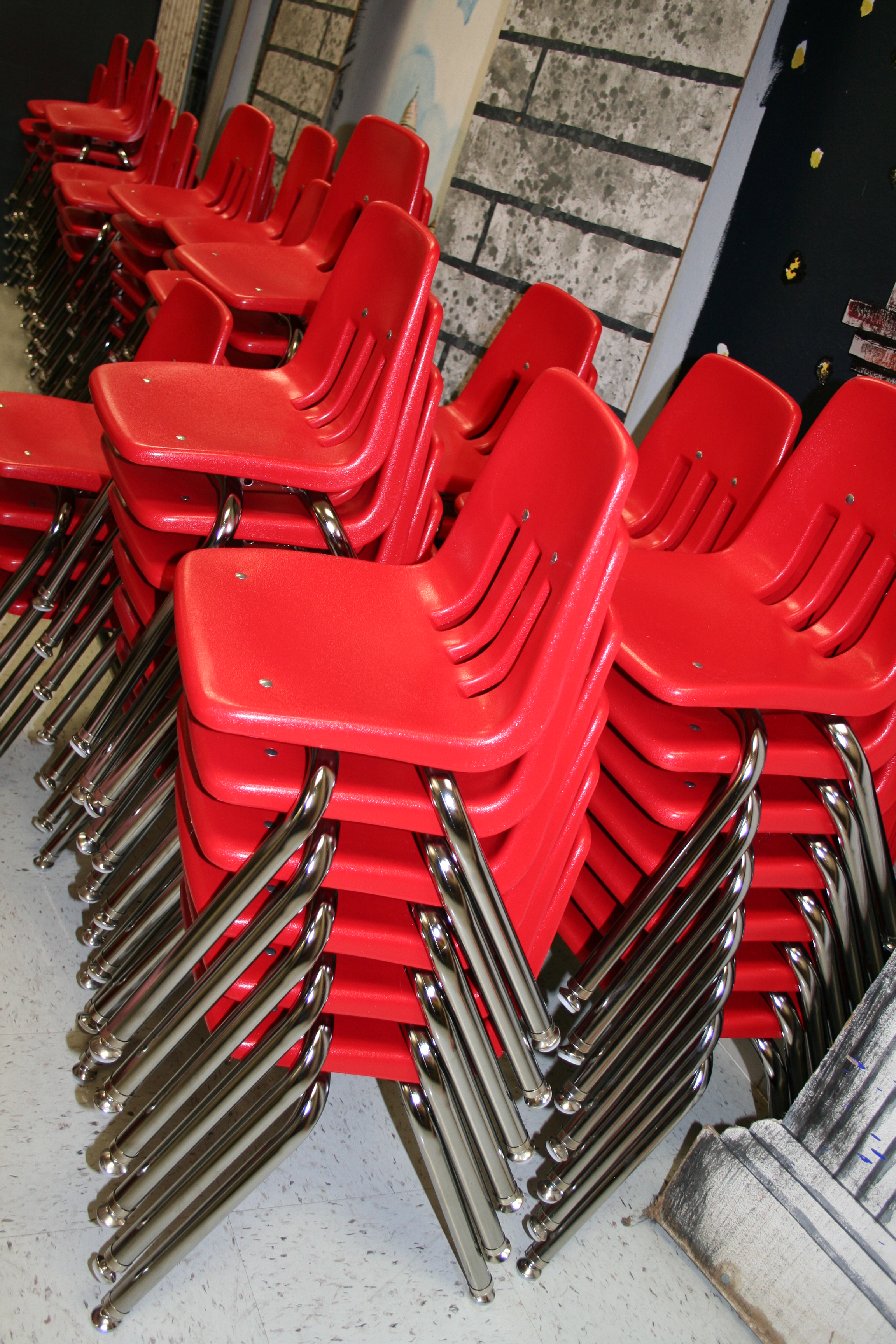
Standard-issue classroom chairs
It is a good thing to see the world from a different point of view every now and then. We can stand and walk in someone else’s shoes, but what is it like to sit in someone else’s chair? What if the seat of this chair rises only fourteen inches above the ground? I recently had the opportunity to take a seat in these small-size chairs while visiting pre-K and kindergarten classrooms at Dealey Montessori, Medrano Elementary, and Urban Park Elementary in DISD. Two 11th grade students from Skyline High School, Yvonne and Lauren, joined me during the visits to interview several young students who sit in fourteen-inch chairs every day at school.
For me, sitting in one of these chairs is a little bit magical. The world is scaled down and tiny – chalkboards hang at a lower level, tables are shorter, and objects on the lowest bookshelf (which seem to require a further reach) are more colorful and interesting. The chair-sitting experience may also be magical for the students who sit in these small chairs every day as they get used to going to school, learn to write, and make new friends. Chairs are an important part of the school day. They are a place to sit and rest, but also a place to participate in important and creative work. Students shared with Lauren, Yvonne, and me various examples of the work they do in their chairs:
- learning to read books
- making a lion mask
- practicing writing letters and words
- drawing butterflies, ice cream cones, and hearts
- singing with friends
- painting
- counting numbers
[slideshow]
Our visits to schools are part of a larger partnership project between the Dallas Museum of Art and the Architecture Cluster at Skyline High School. Lauren and Yvonne are just two among more than eighty Skyline Architecture Cluster students who created an amazing installation now on view in the Center for Creative Connections. The installation, Sculpting Space: 299 Chairs, features fourteen-inch, standard-issue classroom chairs in all colors as the primary material. The Skyline students have transformed ordinary chairs into extraordinary chair assemblages that sculpt the space of one gallery. Museum visitors move through the space, walking under and around clusters of chairs. Look for more information in the coming weeks about Skyline’s unique installation on the blog Uncrated.
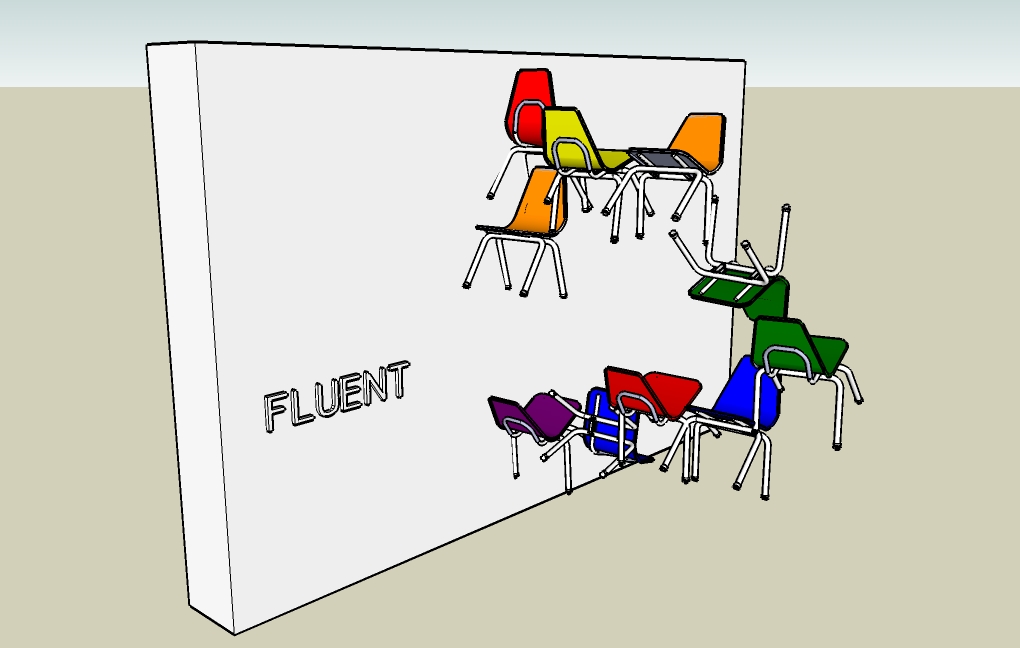
Google Sketch-Up model for a chair assemblage that reflects the spatial concept, "fluent"
Early in the partnership project, Skyline students and their teachers, Peter Goldstein and Tom Cox, had the brilliant idea to get “used” chairs from three DISD elementary schools. They were interested in chairs with stories to tell — marked-up with years of scratches and crayon scribbles. The DMA purchased hundreds of new chairs, and then Skyline students swapped the new chairs for old chairs at Dealey, Medrano, and Urban Park. As part of the process, the elementary school students were invited to draw their chairs, write about them, and think about all of the many things they do while seated in the classroom. Video interviews with pre-K and kindergarten students about their chairs are included with the DMA installation. Special thanks to the teachers, students, and staff at Dealey Montessori, Medrano Elementary, and Urban Park in DISD for being a part of this wonderful partnership!
“The one true connection we have made was with the chairs and when we were little kids. They bring back memories of our childhood. We also have a connection to the students who once sat in these chairs where they did their work, and colored and painted.”
Luis Garcia, grade 10, Skyline High School (DISD)
Nicole Stutzman
Director of Teaching Programs and Partnerships
